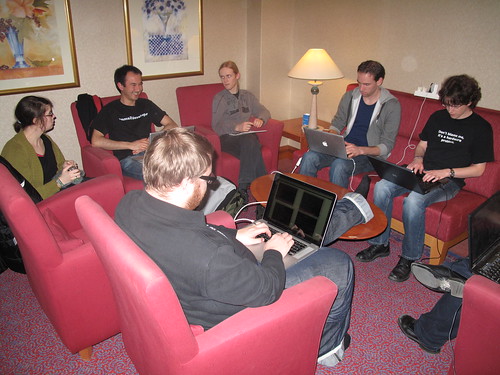Or why and how the new XMMS2 GUI client should be extensible (and what I mean by extensible anyway).
Quizz: What do Winamp, Foobar2000, Emacs, Eclipse and Firefox have in common?
(Vim users, we love you too, but shut up for now please.)
They are very popular and they highly promote extensibility.
Now, we all know that correlation != causation. What is certain, however, is that all those projects boast many fan(boy)s, some of whom even get quite religious about it.
This enthusiasm reflects itself in the emergence of strong communities: people who share content, tips, modules, extensions, themes, configurations, scripts, etc. And those people usually aren’t even core developers of the software, sometimes not developers at all; just users or hobbyists who like the project.
Paradoxically, most of what they share is aimed at personalizing the software, i.e. making it the user’s own, fitting the user’s wishes and needs. This creates a feeling of ownership and satisfaction, because the user can bend it the way she likes and master it like a pro.
In essence, the idea here is give power to people to shape the software the way they want, and they will extend it in creative ways and get together to share these extensions. And I think that encouraging this creative freedom is one of the many factors which contribute to popularity.
